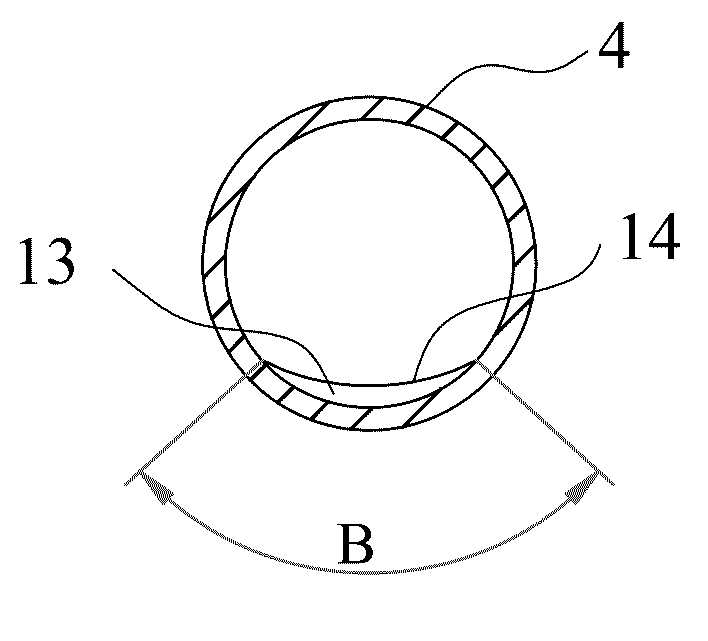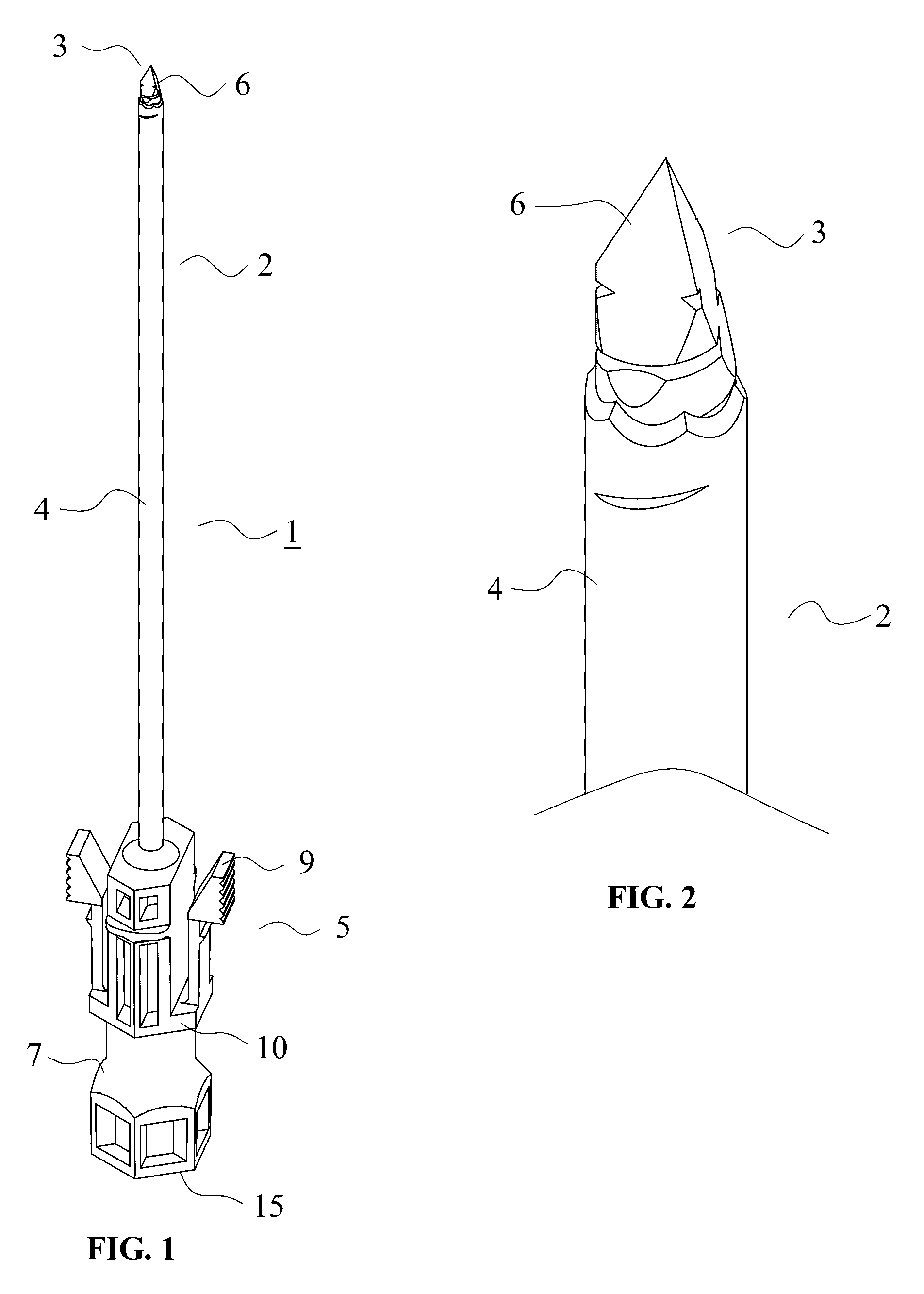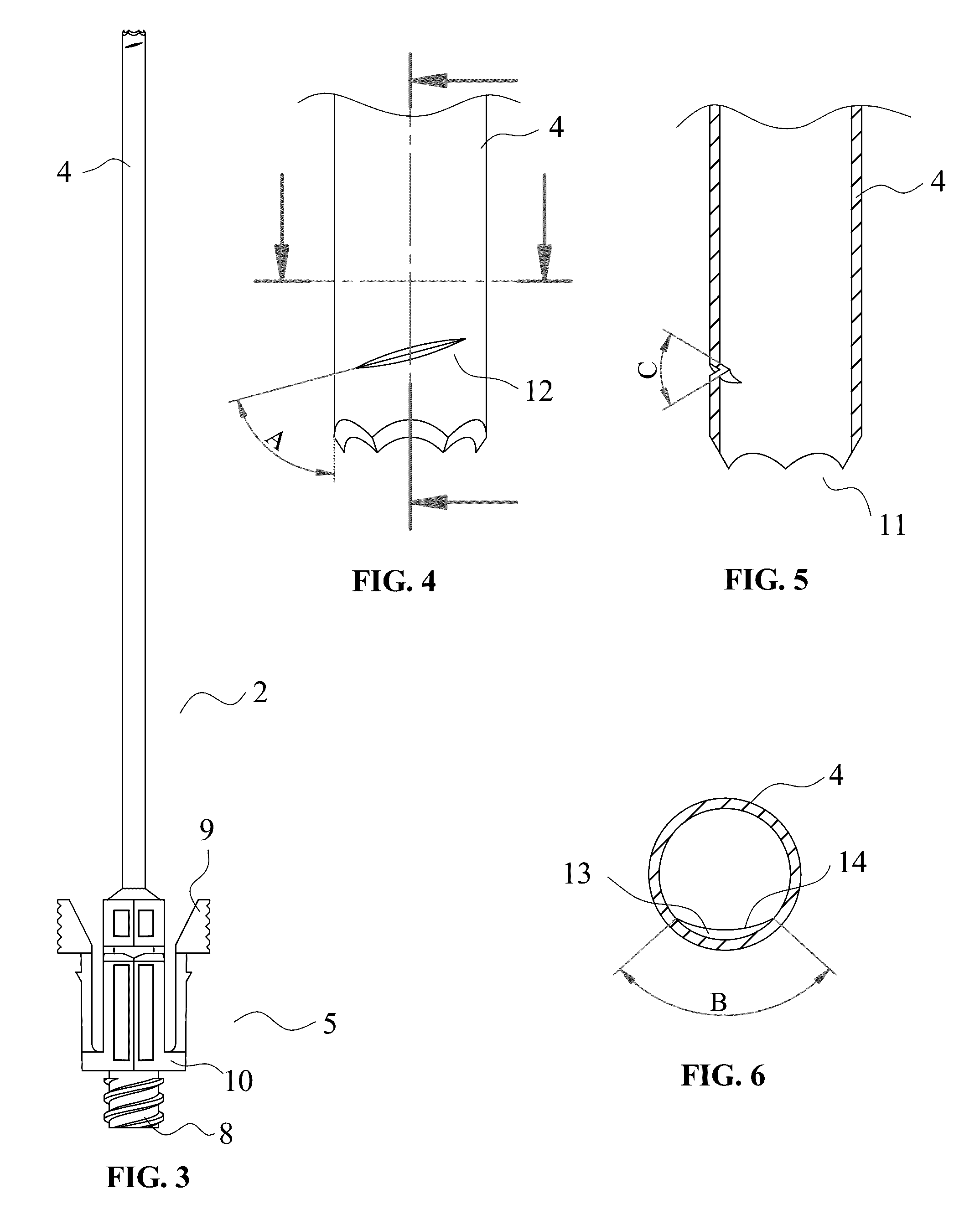Biopsy trocar
a biopsies and trocar technology, applied in the field of trocar, can solve the problems of requiring the practitioner to exert considerable pressure during the penetration into the bone, causing pain and discomfort for the patient, and causing pain and discomfort for the patient, and achieve the effect of safe, reliable and rapid biopsies and reasonable cos
- Summary
- Abstract
- Description
- Claims
- Application Information
AI Technical Summary
Benefits of technology
Problems solved by technology
Method used
Image
Examples
Embodiment Construction
[0046]The trocar 1 according to the present invention, shown in FIG. 1, is composed of a biopsy needle 2 and of a mandrel 3. The biopsy needle 2 is formed by a cannula 4 lodged in a body 5. The mandrel 3 is formed by a shaft 6 lodged in a stopper 7. FIG. 2 shows the distal end of the trocar 1 in more detail.
[0047]FIG. 3 shows the biopsy needle 2, of which the body 5 is composed of a Luer connector 8 and a snap-fit system 9. The shape 10 of the body 5 is hexagonal and cooperates, for example, with a hexagonal cavity of an endpiece of a drill. The snap-fit system 9 has two flexible parts that snap into recesses in the endpiece of the drill machine, allowing the trocar 1 to be supported and driven in rotation. The Luer connector 8 makes it possible, for example, to connect a syringe to the biopsy needle 2 in order to aspirate marrow, if this is necessary during a surgical procedure.
[0048]FIGS. 4 to 6 show the distal part of the cannula 4. FIGS. 5 and 6 show sections along the lines ind...
PUM
 Login to View More
Login to View More Abstract
Description
Claims
Application Information
 Login to View More
Login to View More - R&D
- Intellectual Property
- Life Sciences
- Materials
- Tech Scout
- Unparalleled Data Quality
- Higher Quality Content
- 60% Fewer Hallucinations
Browse by: Latest US Patents, China's latest patents, Technical Efficacy Thesaurus, Application Domain, Technology Topic, Popular Technical Reports.
© 2025 PatSnap. All rights reserved.Legal|Privacy policy|Modern Slavery Act Transparency Statement|Sitemap|About US| Contact US: help@patsnap.com



